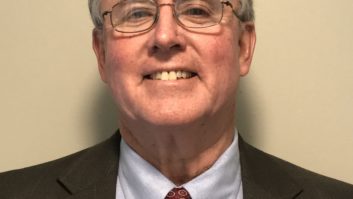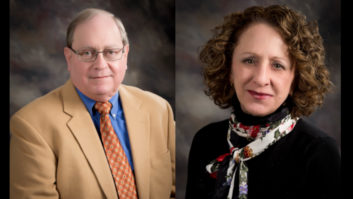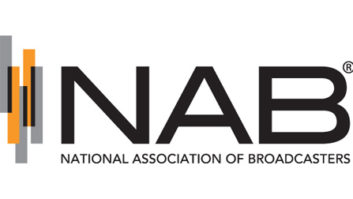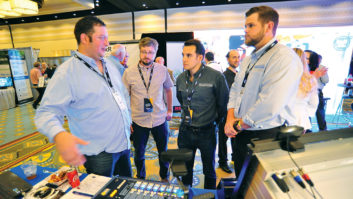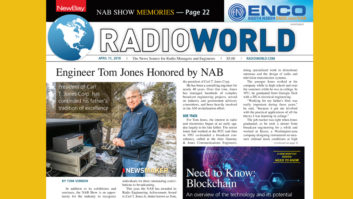
In addition to its exhibitions and seminars, the NAB Show is an opportunity for the industry to recognize individuals for their outstanding contributions to broadcasting.
This year, the NAB has awarded its Radio Engineering Achievement Award to Carl T. Jones Jr., better known as Tom, the president of Carl T. Jones Corp.
He has been a consulting engineer for nearly 40 years. Over that time, Jones has managed hundreds of complex broadcast engineering projects, served on industry and government advisory committees, and been heavily involved in the AM revitalization effort.
SIDE TRACK
For Tom Jones, the interest in radio and electronics began at an early age, due largely to his late father. The senior Jones had worked at the FCC and then in 1953 co-founded a broadcast consultancy, called at the time Gautney & Jones Communications Engineers, doing specialized work in directional antennas and the design of radio and television transmission systems.
The younger Jones worked at the company while in high school and over the summers while he was in college. In 1971, he graduated from Georgia Tech with a BS in electrical engineering.
“Working for my father’s firm was really important during those years,” he said, “because it got me involved with the practical applications of all the theory I was learning in college.’’
The job market was tight when Jones graduated, so he took a detour from broadcast engineering for a while and worked at Ensco, a Washington-area company designing instruments to measure railroad track conditions at high speeds. ‘‘I worked on research projects involving inertial measurement systems, and data acquisition systems and analyzing rail car vehicle dynamics.”

While at Ensco, he worked his way up from junior engineer to engineering manager of the rail division of the company. He also attended classes at George Washington University at night and earned his MSEE degree in 1979.
Jones returned to CTJC in 1979 as a senior engineer, and became a full partner in 1983. The company was sold to SAIC in 1984. His father retired in 1985, and Tom Jones assumed his current role as president. He repurchased the company from SAIC in 1991.
CTJC is focused on AM-FM-TV engineering projects, although work is also done for government agencies. Currently, there are 11 employees including eight engineers, a shop manager and two administrators. The corporation’s offices are located just outside of the Washington beltway in Springfield, Va., with facilities including office and laboratory space, shielded enclosures, an open field test range and manufacturing plant.
While CTJC consults on a variety of broadcast projects, Tom Jones has a passion for AM.
‘‘I’ve designed phasing and coupling equipment for arrays of up to 12 towers. Some of the more challenging projects involved the design of multiplexing filters facilities to allow up to four stations to broadcast from a single tower or set of towers.’’ Passion aside, though, all the engineers at CTJC shift among the realms of FM, AM and TV as the work load demands. ‘‘We have a great staff that is very versatile.’’
BETTERING AM
Over the years, Jones has seen remarkable changes in the technology used to design AM directional arrays.
‘‘When I was in high school, it was extremely labor-intensive, using mechanical calculators and trigonometric tables. Today, we use programs like V-Soft AM Pro for most of our designs and the NEC-4 and MiniNEC programs combined with a circuit synthesis/analysis program called SPICE for our phasor and multiplex filter designs along with several proprietary computer programs.’’
Looking over his career, Jones doesn’t identify one particular moment as the highlight. ‘‘The thing that I am proudest of is providing our clients with the highest quality technical product day in and day out for over 39 years. It’s very difficult to be that consistent over such a long period of time.’’

He has enjoyed serving on the board of directors for the Association of Federal Communications Consulting Engineers for eight years. Jones also has great memories of a special Air Force project involving the initial design and deployment of a 10-station nodal network called GWEN (Ground Wave Emergency Network). The military communications system operated in the 150–175 kHz LF band. ‘‘Two of the GWEN transmitters were located at existing AM sites, and I designed the diplexers to combine the LF and MF signals.’’
As Jones reflects on some of the challenges and opportunities facing broadcasters, AM improvement comes to mind.
‘‘I believe there are opportunities for the FCC to adopt more of the proposals that remain pending in the AM Revitalization Rulemaking Proceedings. Many of the proposed rule changes are not controversial, and could be separated from those that have generated some controversy in order to achieve some additional and much-needed improvement, particularly in the area of overcoming manmade noise. I think a concerted effort in this area would make a lot of sense.’’
He looks forward to spending more time with his three children and six grandchildren, hiking and fishing.
But he has no immediate plans to retire. ‘‘I want to keep going as long as I can. I love this business, and the appreciation of clients for a job well done is very rewarding. I also think the quality of the broadcast engineering community is outstanding and it is a privilege to work with these men and women every day.’’

FREINWALD SALUTED FOR SERVICE
Also being honored this month by NAB is Clay Freinwald of Freinwald Technical Services, recipient of the 2018 Service to Broadcast Engineering Achievement Award.
According to the announcement, Freinwald began his broadcast engineering career in 1961 and has held various technical positions at numerous stations and station groups, including Tacoma News Tribune, Viacom and Entercom. He is a Fellow in the Society of Broadcast Engineers and a founding member of the Broadcast Warning Working Group, helping broadcasters and others understand and implement EAS technology. Freinwald has served as chairman of the Washington State EAS Committee for over 20 years and chaired the SBE EAS Committee for a decade.
Radio World honored him with its Excellence in Engineering Award in 2007.
HONOR ROLL
Recipients of the NAB Engineering Achievement Award are listed here. Beginning in 1991, radio and TV winners were named; radio winners are shown.

1959 John T. Wilner
1960 T.A.M. Craven
1961 Raymond F. Guy
1962 Ralph N. Harmon
1963 Dr. George R. Town
1964 John H. DeWitt Jr.
1965 Edward W. Allen Jr.
1966 Carl J. Meyers
1967 Robert M. Morris
1968 Howard A. Chinn
1969 Jarrett L. Hathaway
1970 Philip Whitney
1971 Benjamin Wolfe
1972 John M. Sherman
1973 A. James Ebel
1974 Joseph B. Epperson
1975 John D. Silva
1976 Dr. Frank G. Kear
1977 Daniel H. Smith
1978 John A. Moseley
1979 Robert W. Flanders
1980 James D. Parker
1981 Wallace E. Johnson
1982 Julius Barnathan
1983 Joseph Flaherty
1984 Otis S. Freeman
1985 Carl E. Smith
1986 Dr. George Brown
1987 Renville H. McMann
1988 Jules Cohen
1989 William Connolly
1990 Hilmer Swanson
1991 George Marti
1992 Edward Edison & Robert L. Hammett
1993 Robert M. Silliman
1994 Charles T. Morgan
1995 Robert Orban
1996 Ogden Prestholdt
1997 George Jacobs
1998 John Battison
1999 Geoffrey Mendenhall

2000 Michael Dorrough
2001 Arno Meyer
2002 Paul Schafer
2003 John W. Reiser
2004 E. Glynn Walden
2005 Milford Smith
2006 Benjamin Dawson & Ronald Rackley
2007 Louis A. King
2008 Thomas B. Silliman
2009 Jack Sellmeyer
2010 Steve Church
2011 L. Robert du Treil
2012 Paul Brenner
2013 Frank Foti
2014 Jeff Littlejohn
2015 Thomas F. King
2016 Andy Laird
2017 John Kean
2018 Tom Jones





